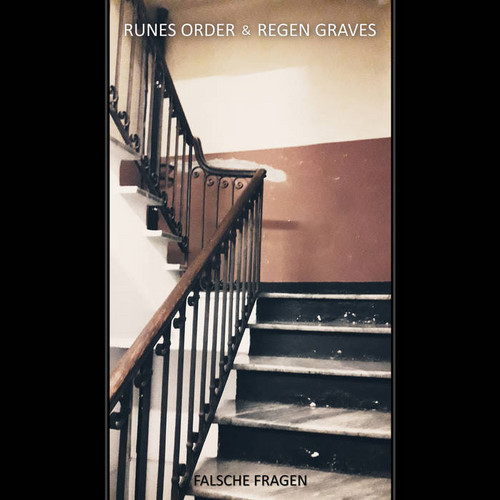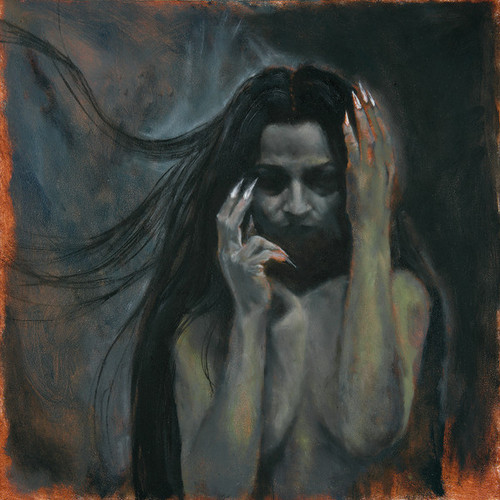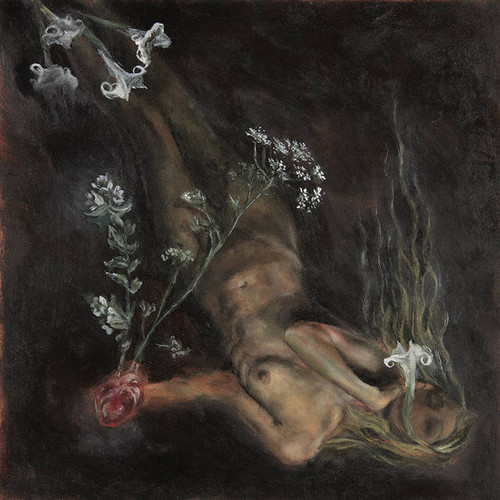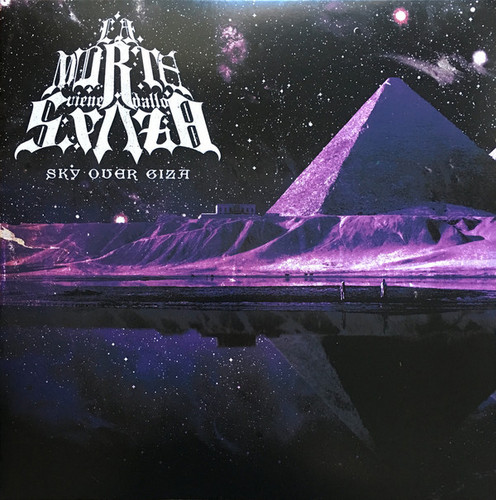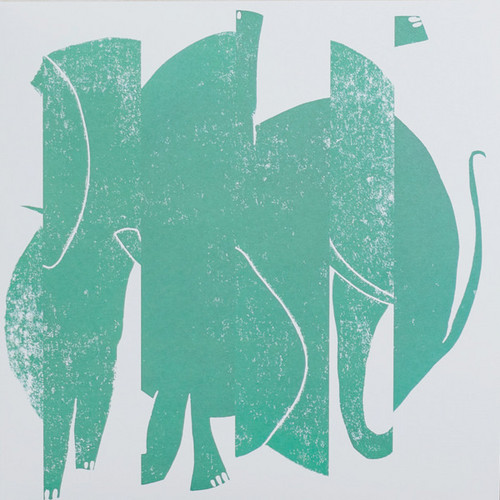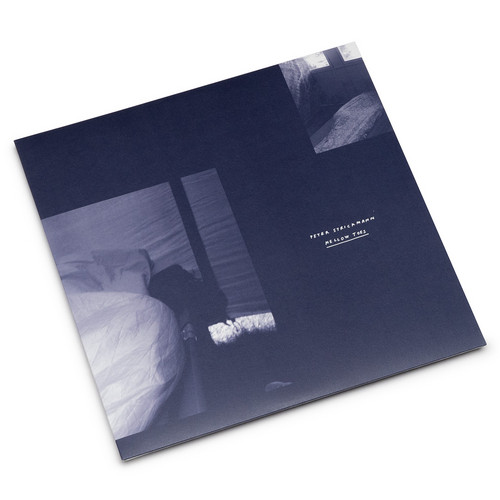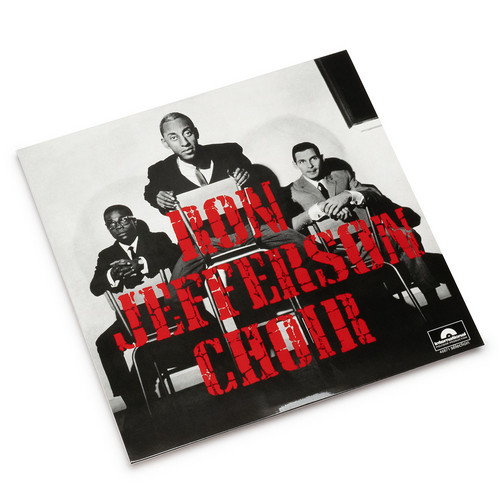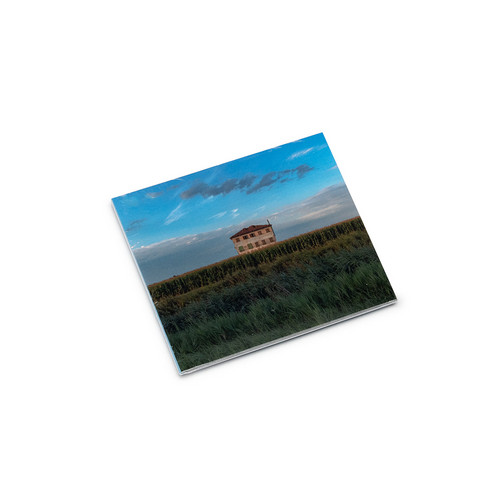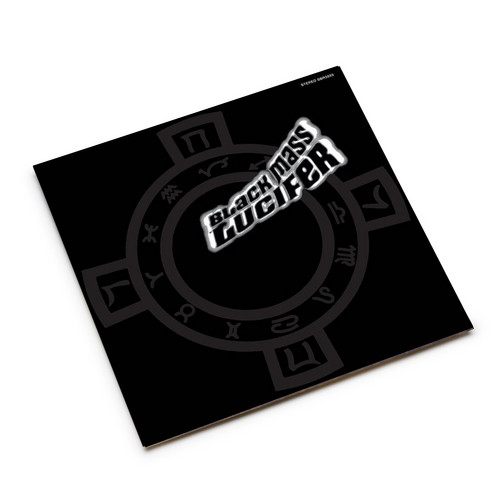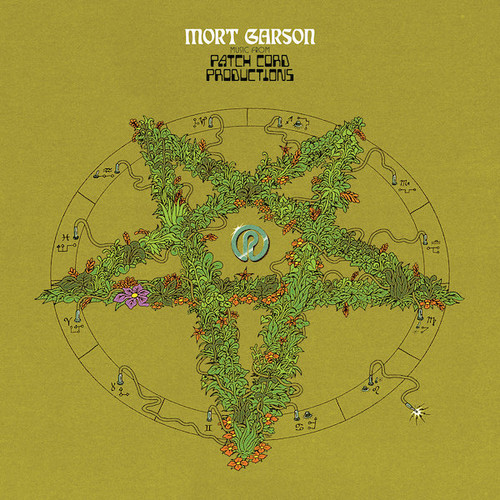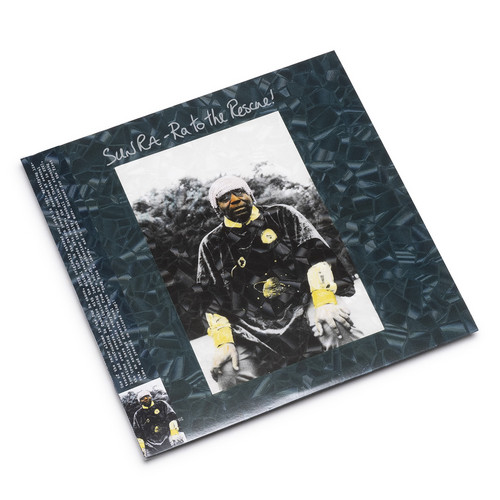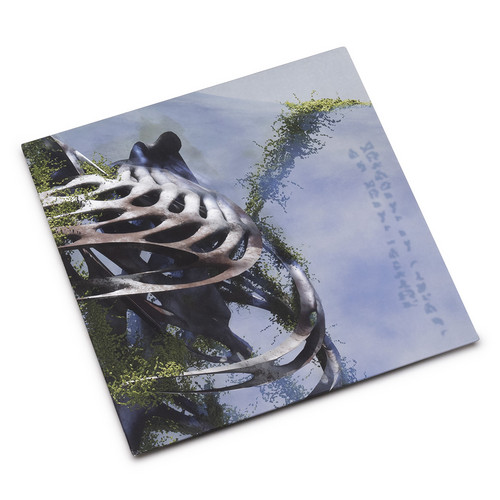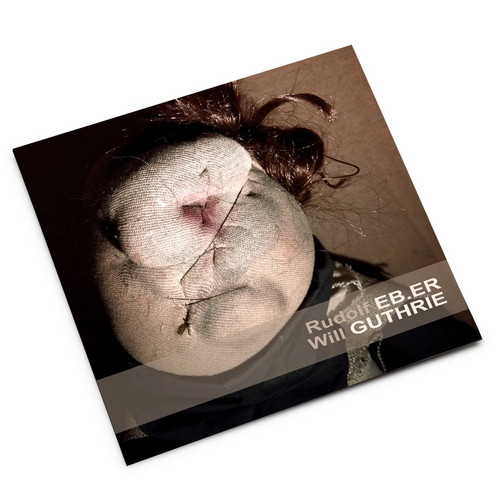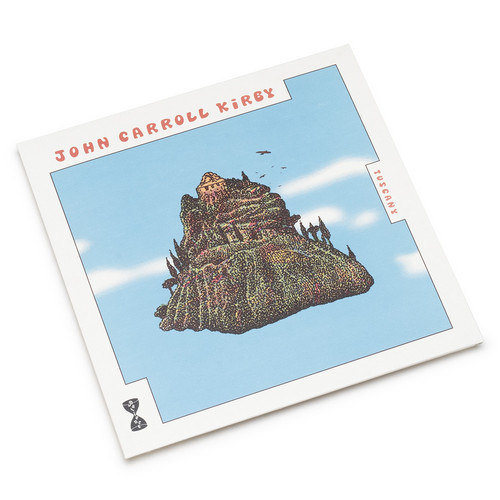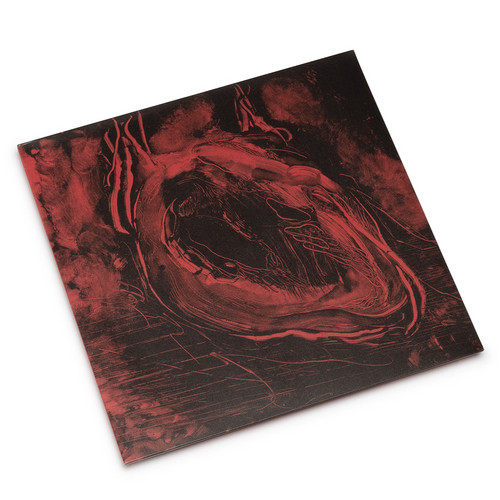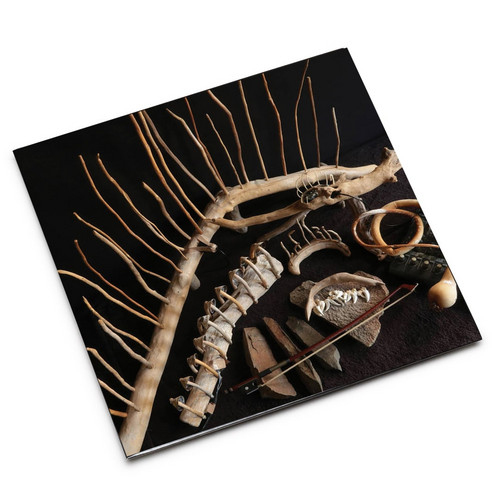Back in stock
Falsche Fragen
A collaboration between Runes Order, historical name of the Italian Dark Ambient, and Regen Graves, former founder of Abysmal Grief also involved in ambient and electronic music with 4 albums released and a new one on the way. Eleven disturbing tracks that also see the presence as special guest of some important names on the Italian scene, such as Alice Kundalini ( She Spread Sorrow ), Laura Agerli ( The Ghost Effect, Wuornos Aileen ) and Roberto Drago ( R.D., The Tapes ). Recorded by Regen Grav…
Scongiuri (LP, Smoke)
*2024 stock* Karyn Crisis and Luciano Lamanna have coiled together to form Serpents, their new electronic-and-voice duo project. Karyn Crisis, a pioneer vocalist in the field of metal music since 1993, is known for her far-reaching vocal range.. from demon growls to angelic croons and most everything in-between. In Serpents, she explores the hypnotic and repetitive nature of charged words and a stripped-down melodic vocal expression, weaving sonic spells that are no less weird than her vocals fo…
Anima
*2024 stock* Anima is not an album for people who need to remain in their comfort zone. It’s an album of spells, protections, and healings, and likely it will take listeners on a journey into the subconscious… that dreamy world where only the brave allow their awareness to open up reveal secrets often kept from themselves. The spiritual journey is a solitary one that sometimes feels like drowning and sometimes feels like flying, and this album is a soundtrack to the grief and discoveries that in…
Sky Over Giza
*2024 stock. 300 copies limited edition* "Sky Over Giza", from mysterious Italian Space Rock band La Morte Viene Dallo Spazio for the first time on vinyl ! Check this amazing band out for a combination of acid, psychedelic, space and kraut rock, drone, dark ambient and doom inspired by vintage sci-fi movies and soundtracks!
Nonzigo
Anma Ott is excited to announce the debut LP of Spemakh, a six-piece surprisemusic-group from across Germany (Saarbrücken, Nürnberg, Berlin, Bonn). Drawing from all corners of the compositional sphere, from free-jazz to serialism and concrète, and using a wide range of homemade and custombuilt wind and percussion instruments, as well as viola, doublebass, voice-noise, guitar, objects and miniature electronics, the band is aiming for a radical play with uncertainty, involving humour, gesture an…
Mellow Toes
"Mellow Toes comes as the second excerpt from my Schnarcharchiv (snoring-collection). This growing collection contains audio-recordings of sleeping humans, friends, and animals in all places and states of rest, sleep and nap, captured during night- and daytime since 2009. It all started during my daily afternoon-naps when I observed my own body getting hyper-sound-sensitive on its way to sleep. In these situations my chest, my arms, my toes turned out to become my biggest ears. It made me search…
Ron Jefferson Choir
This self-titled album is a testimony of the short lived-band led by New-York drummer Ron Jefferson during his stay in Paris in the mid-60s. After a first album under his name on Pacific Jazz in 1962, the founding member of The Jazz Modes and the Les McCann trio made the trip overseas.
Here, he made his living by playing with the popular pianists Errol Parker or Hazel Scott but his main drive was this trio that he formed with two other US expats, bassist Roland Haynes (the same musician who rec…
Reverse Diverse
** Edition of 200 ** An album of sublime workmanship, developed by one of the finest Italian artists in that experimental context in the broadest sense that Fabio Orsi has explored over the years in every direction, with the uncommon ability to always go 'beyond', renewing himself, seeking new sounds and new forms of expression, without ever completely abandoning the 'main' path from which he began his long journey many years ago. In this Reverse Diverse, the artist combines sounds and musical o…
Sem Etc
LP’s are slightly warped (entire pressing) but does not affect playback. Deluxe 3LPs in hardboard, linen-bound box with 22-page book and large poster with score. 'SEM' documents the difficult, challenging and deeply personal early works of autodidactic electroacoustic music composer Joris De Laet (Belgium, 1947) created at his Studio for Electronic Music and IPEM between 1972-1979. All material has been mastered from the original tapes and is previously unreleased. Guided by a radical sense of …
Pharoah Box Edition
Deluxe, embossed 2 LP box set. Alongside a remastered version of Pharoah, his seminal record from 1977, are two previously unreleased live performances of his masterpiece, “Harvest Time.” Includes a 24-page booklet with rarely seen photographs and ephemera, as well as interviews with many of the participants and a conversation with Pharoah himself. With Pharoah Sanders’ blessing, we present the definitive, remastered version of Pharoah, his seminal record from 1977, in an embossed 2 LP box set…
Black Mass
Black Mass is an album of supernatural electronics from synth pioneer Mort Garson, the mastermind behind the cult classic Mother Earth's Plantasia. Originally released in 1971, it’s his only release under the Lucifer moniker, and it taps into a profound darkness that may surprise fans of his sunnier work. These songs are Garson's synthesizer interpretations of occult and esoteric phenomena ranging from the Satanic black mass, to exorcism, to witchcraft, and beyond, and they've inspired artists f…
Music from Patch Cord Productions
No doubt you know the name Mort Garson from his myriad writing, conducting, and arranging credits, topping a thousand in total: the Kim Sisters, Gi Sönne, Lola Novaković, Pfc. Craig Brown, Emilio Pericoli. Or failing that, his sides for Patti Page, Mel Tormé, Rosemary Clooney, Percy Faith, and Mr. Magoo himself. Which is to say, Mort Garson’s road to cool cultural caché and the sublimity of Plantasia meant a decades’ long journey through an underworld of sophisticated, international, string-lace…
Ra to the Rescue
'Ra to the Rescue was initially pressed in limited quantities in 1983, but several of its tracks subsequently were reissued with incongruous tracks on the albums (commonly referred to as) When Spaceships Appear, Cosmo-Party Blues, Somewhere There, and Children of the Sun. Those album "titles" are in many cases simply the names of the first track on a particular side (these were scribbled in pen on otherwise blank labels). To complicate matters, some tracks were retitled for reasons that shall fo…
Citta' Violenta
** Double LP, 300 copies. Black Vinyl ** A tight, atmospheric, and pretty damn funky soundtrack composed by the maestro Ennio Morricone for the 1970 crime-drama Città violenta (released in the USA as The Family in 1973), conducted by Bruno Nicolai, starring the mighty Charles Bronson and directed by Sergio Sollima. Another hard-hitting score by Morricone with quite a dark mood, flowing from the dramatic to psychedelic along with a touch of funkiness. The famous "Città violenta" track, the score…
School of Elea
100 copies limited edition. Housed in high quality card stock with art silk screened by Alan Sherry at SIWA Printing * Swirls of guitar artifacts, collateral noise, percussive events, and synthetics all processed, looped, layered and mystified in improvisations by No-Neck Blues Band members Pat Murano (aka Decimus) and Dave Shuford (aka D. Charles Speer & The Helix). Scary textures and ticklish surprises. In some distant future? No, you say. Now, there’s a logic in being skeptical about seers, b…
becoming in shadows ~ of being touched
It's hard to parse exactly what you're listening to when you immerse yourself in Jason Doell's new recording, Becoming In Shadows ~ Of Being Touched. The old adage about never judging a book by its cover may often hold true but somehow Xuan Ye's beautiful design speaks volumes about both the sonics and structure of this bewildering document by the Toronto-based composer and sound artist. Though the imagery is blatantly computer-generated, it's rife with references to vegetation, bones, water, an…
Hilt
*300 copies limited edition* »Hilt« is the first collaboration between Rudolf Eb.er and Will Guthrie who, based on their previous musical work, seem very different at first glance. However, it quickly becomes apparent, that the distinct approaches to composition and sound complement each other perfectly and make this album a very special and exciting affair. The closer you listen, the more you will be drawn into it and realize that the rhythmic drumming, the careful arrangements of hiss, crackle…
Tuscany
*2023 Repress* Los Angeles based pianist, producer, and songwriter John Carroll Kirby traveled to Pietrasanta, Italy in the summer of 2018 on a self-imposed writing trip. During his stay he composed Tuscany, a two side-long solo piano exploration of this particular geographical envelope, a place where nature is shaped into form.Kirby would cycle 12 kilometers each day to Cascata di Malbacco, a waterfall with jade pools and silver stone, and the inspiration for Side A of Tuscany. His own Cascata …
Ensemble 1: Al Jadi
*2024 stock. 200 copies limited edition* Kinematik spent the best part of 2020 under lockdown, trying to come to grips with Lebanon's and the world's new realities, battling societal, economical and sanitary hurdles and obstacles. In October 2020, upon receiving an invitation from Irtijal Festival in Beirut to perform in its 20th edition, the former trio evolved into a full-blown ensemble, comprising a total of 6 musicians - the core line-up of Anthony Sahyoun, Rudy Ghafari and Akram Hajj was jo…
Multiple Park
Cheryl E. Leonard builds and plays electroacoustic instruments made out of natural materials such as bones, driftwood, shells, seaweed, feathers, and stones. Jon Leidecker (aka 'Wobbly') responds to the sounds of her creations with synthesized animal voices driven by machine listening. The inaugural collaboration of these two veterans of the San Francisco Bay Area electronic music scene can be heard on the album Multiple Park, a collection of works assembled from both studio and outdoor performa…
